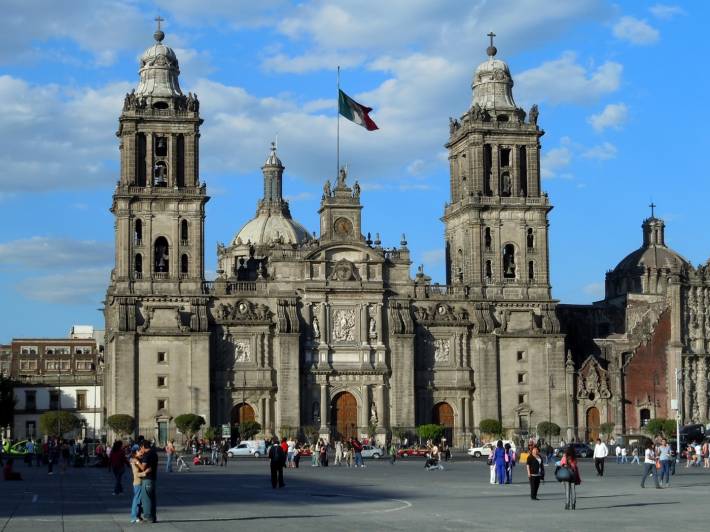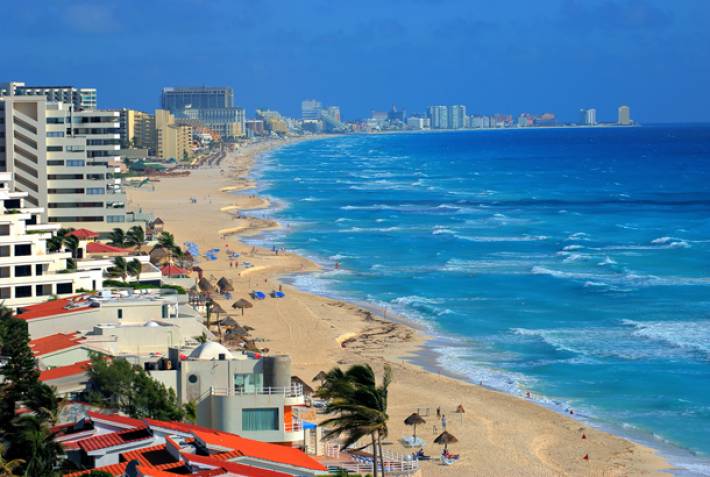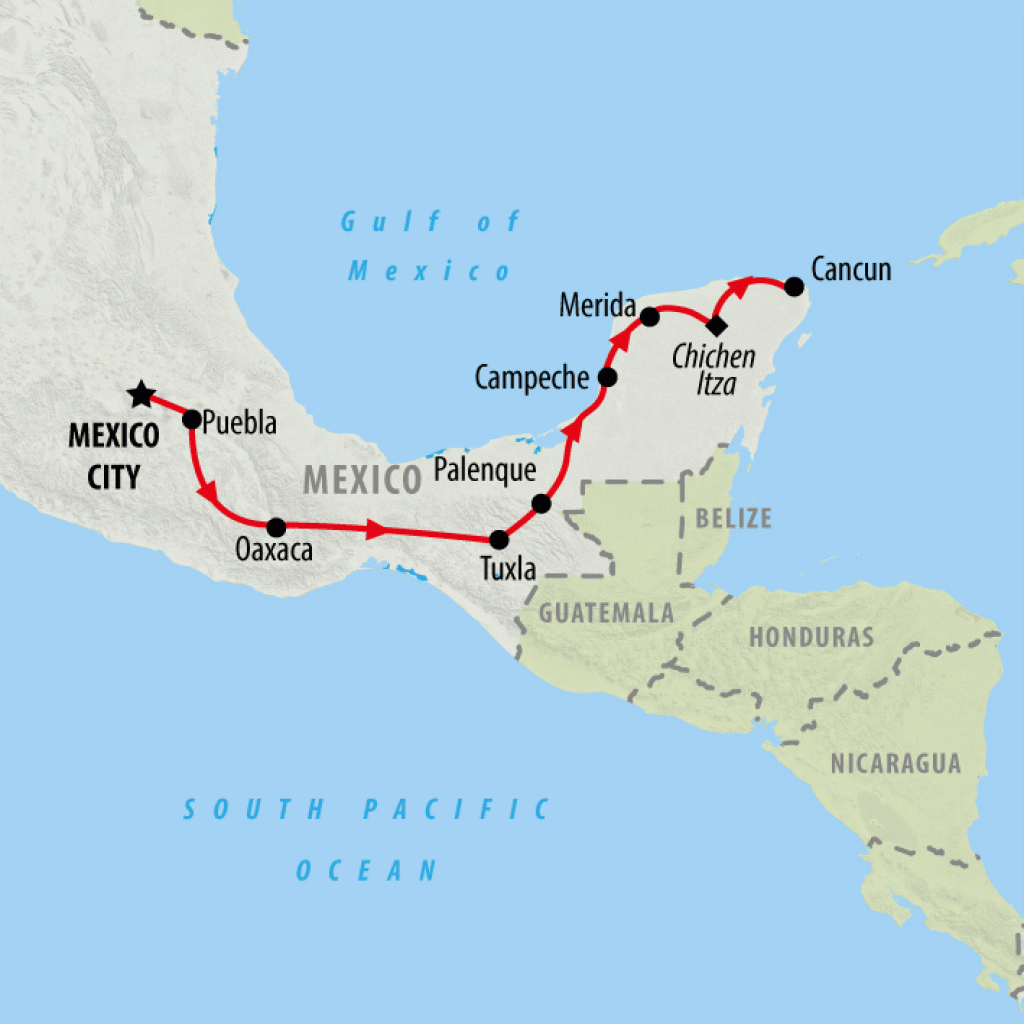Top 10 Destinations in Mexico
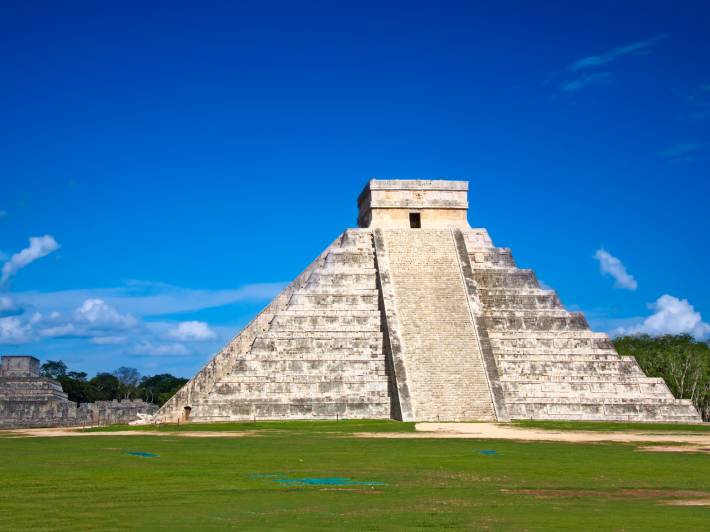
Chichen Itza
This large pre-Columbian archaeological site was built by the Maya civilisation and lies in the Yucatan peninsula. In the Maya language, Chichen Itza means ‘at the mouth of the well of Itza’ and the site features numerous cenotes, a type of well that was the only source of fresh water in the Yucatan jungle. These openings were considered sacred as the Mayans believed them to be the entrance to the underworld. It is believed that human sacrifices were sometimes made to these wells, those who survived thought to be seers.
The site also contains the Kukulkan Pyramid, which served as a temple to the god Kukulkan and also as a calendar with as many steps as there are days of the year. In 2007 this pyramid was elected one of the new Seven Wonders of the World. The site's origins remain unclear but it is thought that a large Mayan community thrived here between 700 AD and 900 AD. Chichen Itza was the principal ceremonial centre of Yucatan and the spectacular remains include artistic works and stone monuments that reveal the Maya and Toltec vision of the world and universe. Inside the site, visitors will find the largest ball court in the Maya world where games were once played, temples, plazas and an observatory with an impressive curved inner stairway that resembles a snail.
Mexico City
World class museums, numerous archaeological treasures, international cuisine and restaurants, amazing shopping centres, diverse nightlife, charming colonial neighbourhoods, and beautiful gardens and parks – Mexico’s capital really has it all. The city combines years of history with a fast-growing modern urban centre to provide visitors with days of possible activities and sights.
Mexico City was originally built by the Aztecs in 1325 on an island in Lake Texococo. Zocalo, the city’s town square and historic heart, stands on the same spot as Montezuma’s palace once stood. The floating gardens of Xochimilco, which have been around for 700 years, still operate today as they did in the Aztec times. But Mexico City is not all about history. Today you can check out a bullfight at Plaza Mexico, a rodeo at Rancho del Charro, an evening of Lucha Libre, Mexico’s famous form of free wrestling, or perhaps a late night Mariachi performance at Garibaldi Plaza. One thing’s for certain – Mexico’s capital will keep you entertained.
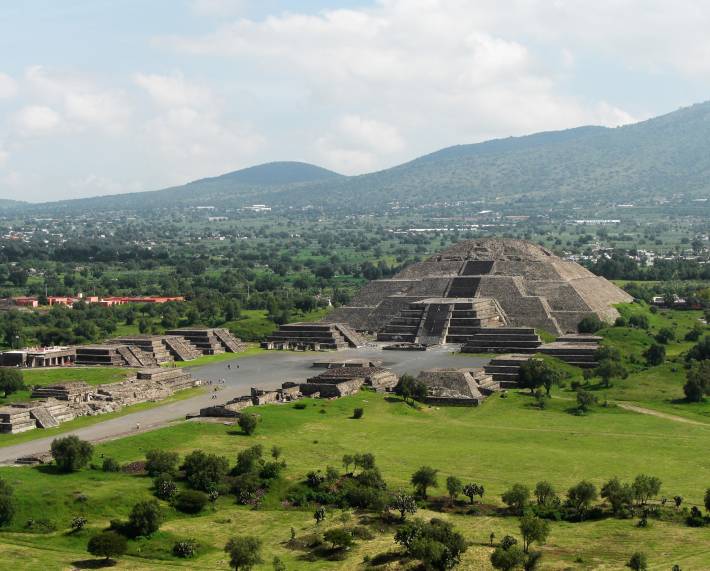
Teotihuacan
Teotihuacan is an enormous UNESCO World Heritage site just outside of Mexico City. Containing some of the largest pyramids built in pre-Columbian Americas, including the Pyramid of the Sun, which is the third largest pyramid in the world, Teotihuacan is rightfully one of Mexico’s most visited sites. The site is known for its large residential complexes, well-preserved colourful murals and the Avenue of the Dead, which was originally 4km long and flanked by temples and palaces. Once a religious and economic centre, Teotihuacan was established in 100BCE. At its zenith, it had a population of 200,000 inhabitants and was the largest city in the world with wide reaching influence throughout the Maya region. No trip to Mexico would be complete without a visit to these spectacular ruins.
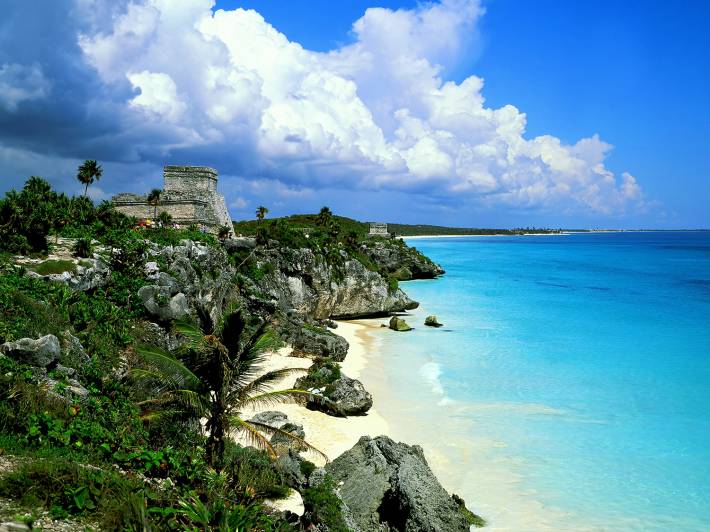
Tulum
Featuring a spectacular coastline with jade-green waters and fine sands, Tulum is one of the best beach spots on Mexico’s east coast. But what makes this destination all the more special is its Mayan ruins. Located on cliff overlooking the Caribbean Sea, the ruins are undeniably photogenic. Tulum was the only Mayan city to be built on the coast and its ruins date back as far as the 13th century. Under the cliff lies Paradise Beach, where visitors can relax and swim, or take an excursion to the famous Mesoamerican Reef Barrier. The reef forms part of the Sian Ka’an Biosphere Reserve, where visitors will find close to half a million hectares of beaches, tropical forests and mangroves.
Also located close to Tulum is one of the most famous cenotes in Mexico. Cenote Dos Ojos is a vast underwater cave system stretching nearly 61 kilometres in length and reaching depths of 118 metres. Its crystal-clear blue waters are simply perfect for snorkeling and diving, and its caverns filled with stalagmites and stalactites wow all those that enter.
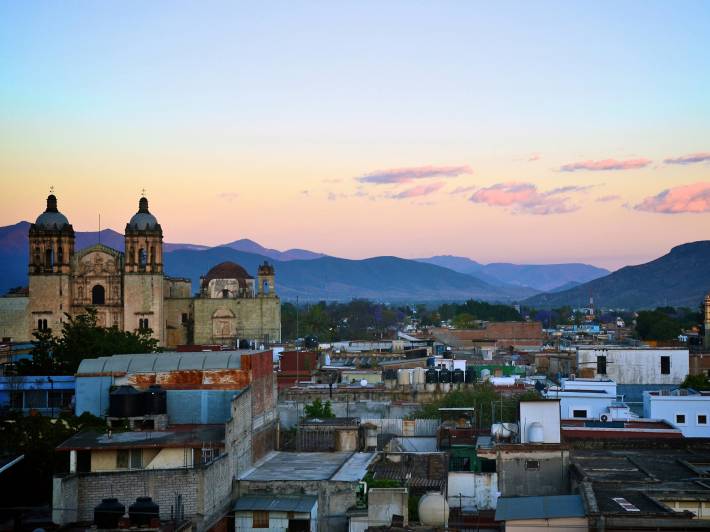
Oaxaca
Located in the south west of Mexico, Oaxaca is well known for its native cultures and large number of colonial-era buildings. A world heritage site since 1987, the notable attractions of the city include the main plaza, known as the Zocalo, the state government and federal palace and its imposing cathedral built in 1535. The city also boasts a number of churches and museums, and a large, colourful market that is known for its regional dishes. Oaxaca is considered Mexico’s culinary capital and has a large variety of moles, a complex type of sauce that always contains chilli pepper and on average, over 20 other ingredients.
Other attractions are the verdant mountain landscapes of the Oaxaca valleys, ideal for a range of outdoor activities. The beautiful, vibrant city of Oaxaca is the heart of the region. Its people are highly creative, producing Mexico’s finest range of crafts and art. Surrounded by colourful traditional villages, the city has deep rooted indigenous customs and is characterised by lively fiestas, and spirited street performances and parties.
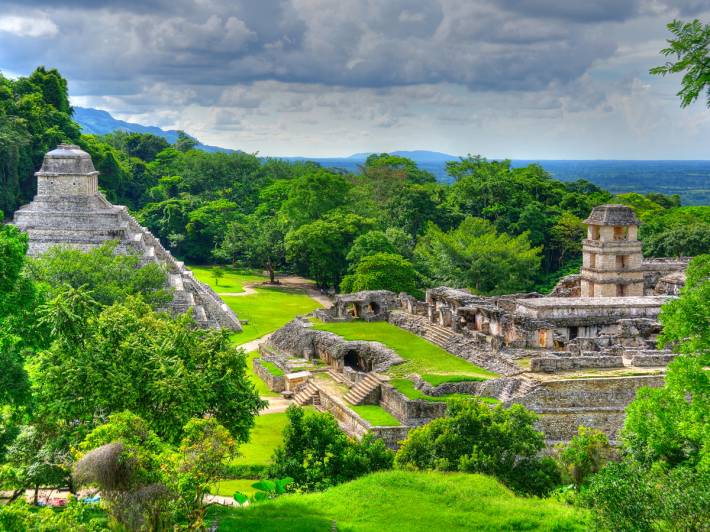
Palenque
During the 7th century, Palenque was a flourishing Mayan city. Today, its ruins are some of the most impressive examples of Mayan architecture in Central America. Located in southern Mexico, the site contains some of the finest sculpture and bas-relief carvings the Mayans produced. The creative genius of the Mayan civilisation can be seen in the elegance and craftsmanship of Palenque’s expanded interior spaces, multiple openings and use of galleries. Temple summits offer breathtaking views of the flat plains to the north and lush, misty green mountain backdrop to the south.
The site’s monuments and the many hieroglyphic inscriptions have provided historians with a long sequence of the ruling dynasty during the 7th century, and extensive knowledge of the city’s rivalry with neighbouring states. The city’s downfall and abandonment happened towards the end of the 10th century with the invasion of coastal people. With a mere 10% of the entire site excavated and more than a thousand structures still covered in jungle, the mystery and intrigue of Palenque will continue to hold strong.
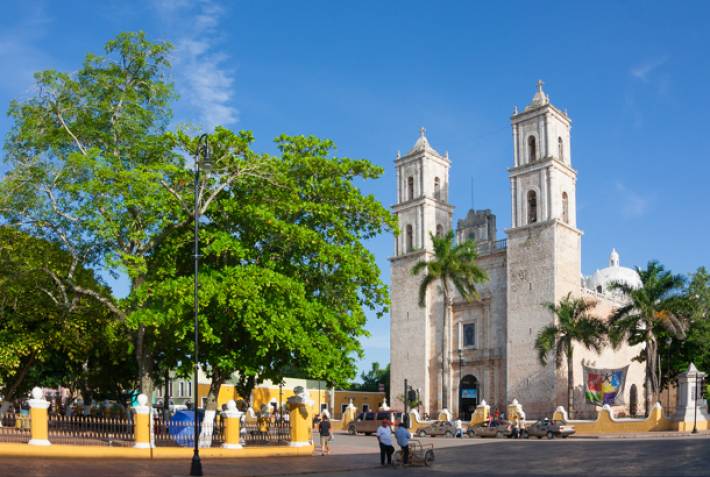
Merida
The awards have been flooding in for Merida, the capital of the Yucatán Peninsula, with it named one of Lonely Planet’s top 10 cities for 2017 and designated America Capital of Culture for the second time as well as being ranked one of the safest places in Mexico. When you consider the beautiful well-preserved colonial architecture gems lining the streets, it’s not hard to see why. Merida’s cultural offering is top-notch – wander over to the Plaza Grande to watch music performances and folk dances, learn about Mayan culture in the world-class museum Gran Museo del Mundo Maya and stroll down Paseo de Montejo, an avenue lined with elegant 19th century mansions showcasing Europe’s architectural influence. It’s a great place to base yourself for a day spent at Chichen Itza, leaving early in the morning and returning in the late afternoon to make the most of the many restaurants serving delicious Yucatean food.
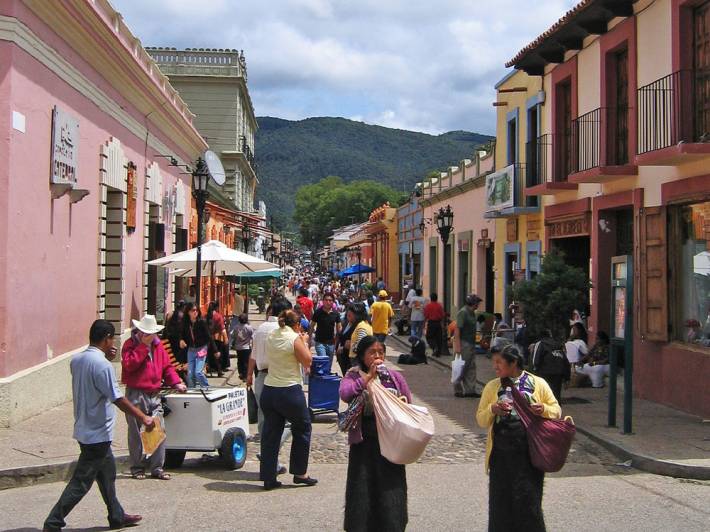
San Cristobal
Located in the central highlands of Mexico, San Cristobal is considered the cultural capital of the state of Chiapas. Situated in a small valley surrounded by hills, the city is a wonderful place to wile away a few days. The centre of the city is still rich in Spanish colonial architecture, highlights including the cathedral, the Santo Domingo church and the large open-air markets where visitors can find an exotic collection of crafts and locally made items. A number of archaeological sites lie nearby and natural attractions include caves, rivers and waterfalls. Mayan villages surround the city and the Mayan influence is strong. Its blend of a peaceful and welcoming atmosphere combined with an artistic and bohemian flair, makes San Cristobal a popular inclusion on any visit to Mexico.
Cancun
Cancun has had a huge transformation over the years, changing from the small fishing town of the seventies into a city famous for its metropolis of glitzy hotels along a seemingly endless stretch of beach. However for those looking for something different to the all-inclusive resorts, Cancun is a destination of two halves – Zona Hotelera, the hotel district, and the traditional downtown area known as El Centro. Described as an experience of ‘real Mexico’, it’s here you’ll find salsa clubs, the famous maze-like Market 28, the ancient Mayan ruins of El Meco and many restaurants serving delicious authentic Mexican food. Facing out on to the Caribbean coast, you’ll be able to make the most of many water based activities including snorkelling, scuba-diving, parasailing and jet-skiing.
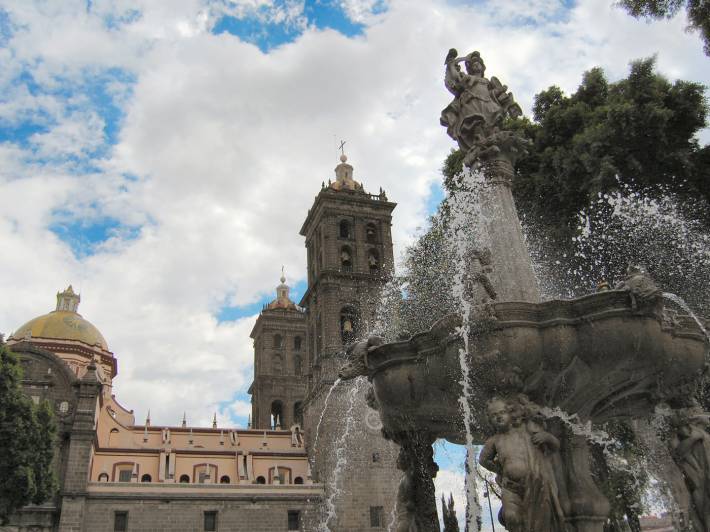
Puebla
Surrounded by volcanoes and snow capped mountains, the city of Puebla was founded by the Spanish conquistadors during the 16th century. It was the first city in central Mexico that was not built upon the ruins of a conquered Amerindian settlement, which explains its European appearance. The historic downtown remains a Spanish colonial treasures filled with elegant 17th and 18th century European architecture and art, and baroque edifices. The city is well known for its splendid architecture, including the spectacular cathedral with the tallest towers in Mexico. During the colonial period, Puebla was a principal city due to its strategic location halfway between the port of Veracruz and Mexico City. Nowadays, Puebla offers an excellent blend of pre-Hispanic, Arabic, French and Spanish culture and cuisine, and traditional markets where local artisans sell pottery, bark paper paintings and unique onyx and marble sculptures.
See Also
For further help planning your visit to Mexico check out our Travel Guide resources:
Best Time to Visit - climate, seasons and festivals in Mexico
Top Travel Tips - useful info on health, food and money in Mexico
